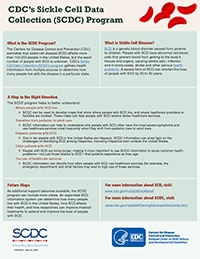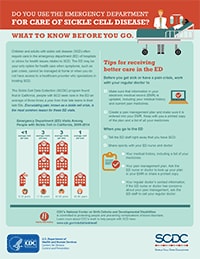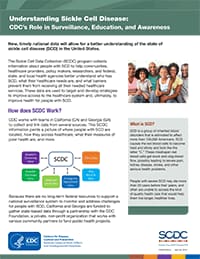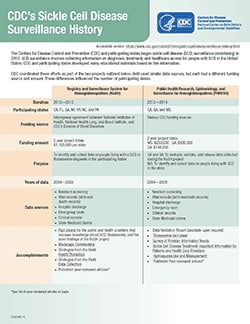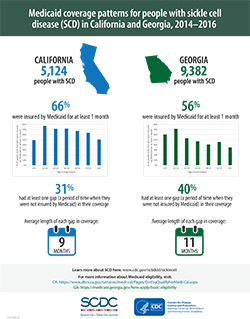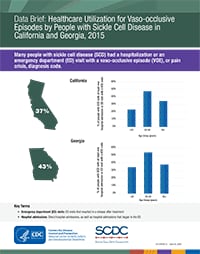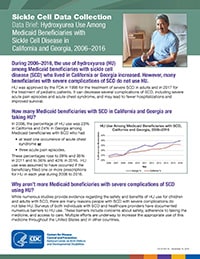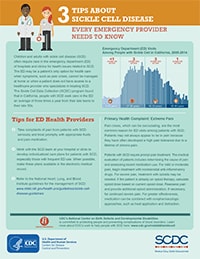SCDC Fact Sheets
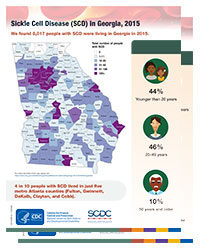
A Snapshot of Sickle Cell Disease in:
CDC’s Sickle Cell Data Collection (SCDC) Program
The Centers for Disease Control and Prevention (CDC) estimates that sickle cell disease (SCD) affects more than 100,000 people in the United States, but the exact number of people with SCD is unknown. CDC’s Sickle Cell Data Collection (SCDC) program gathers health information from multiple sources to determine how many people live with the disease in a particular state.
Do you use the emergency department for care of sickle cell disease? [PDF – 261 KB]
What to know before you go. Children and adults with sickle cell disease (SCD) often require care in the emergency department (ED) of hospitals or clinics for health issues related to SCD. The ED may be your only option for health care when symptoms, such as pain crises, cannot be managed at home or when you do not have access to a healthcare provider who specializes in treating SCD.
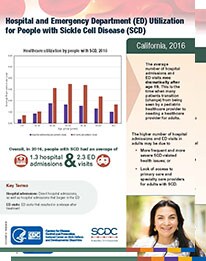
Hospital and Emergency Department Utilization for People with Sickle Cell Disease
Understanding Sickle Cell Disease
The Sickle Cell Data Collection (SCDC) program collects information about people with SCD to help communities, healthcare providers, policy makers, researchers, and federal, state, and local health agencies better understand who has SCD, what their healthcare needs are, and what barriers prevent them from receiving all their needed healthcare services. These data are used to target and develop strategies to improve access to the healthcare system and, ultimately, to improve health for people with SCD.
CDC’s Sickle Cell Disease Surveillance History
The Centers for Disease Control and Prevention (CDC) and participating states began sickle cell disease (SCD) surveillance (monitoring) in 2010. SCD surveillance involves collecting information on diagnoses, treatment, and healthcare access for people with SCD in the United States. CDC and participating states developed many educational materials based on this information.
Data Brief: Medicaid Coverage Patterns
View SCDC data showing Medicaid coverage patterns for people with sickle cell disease (SCD) in California and Georgia, 2014–2016
Data Brief: Healthcare Utilization for Vaso-occlusive Episodes
Many people with sickle cell disease (SCD) had a hospitalization or an emergency department (ED) visit with a vaso-occlusive episode (VOE), or pain crisis, diagnosis code.
CDC’s Sickle Cell Data Collection (SCDC) Data Brief: Hydroxyurea
During 2006–2016, the use of hydroxyurea (HU) among Medicaid beneficiaries with sickle cell disease (SCD) who lived in California or Georgia increased. However, many beneficiaries with severe complications of SCD do not use HU.
3 Tips about sickle cell disease [PDF – 335 KB]
Every emergency provider needs to know. Children and adults with sickle cell disease (SCD) often require care in the emergency department (ED) of hospitals and clinics for health issues related to SCD. The ED may be a patient’s only option for health care when symptoms, such as pain crises, cannot be managed at home or when a patient does not have access to a healthcare provider who specializes in treating SCD.
